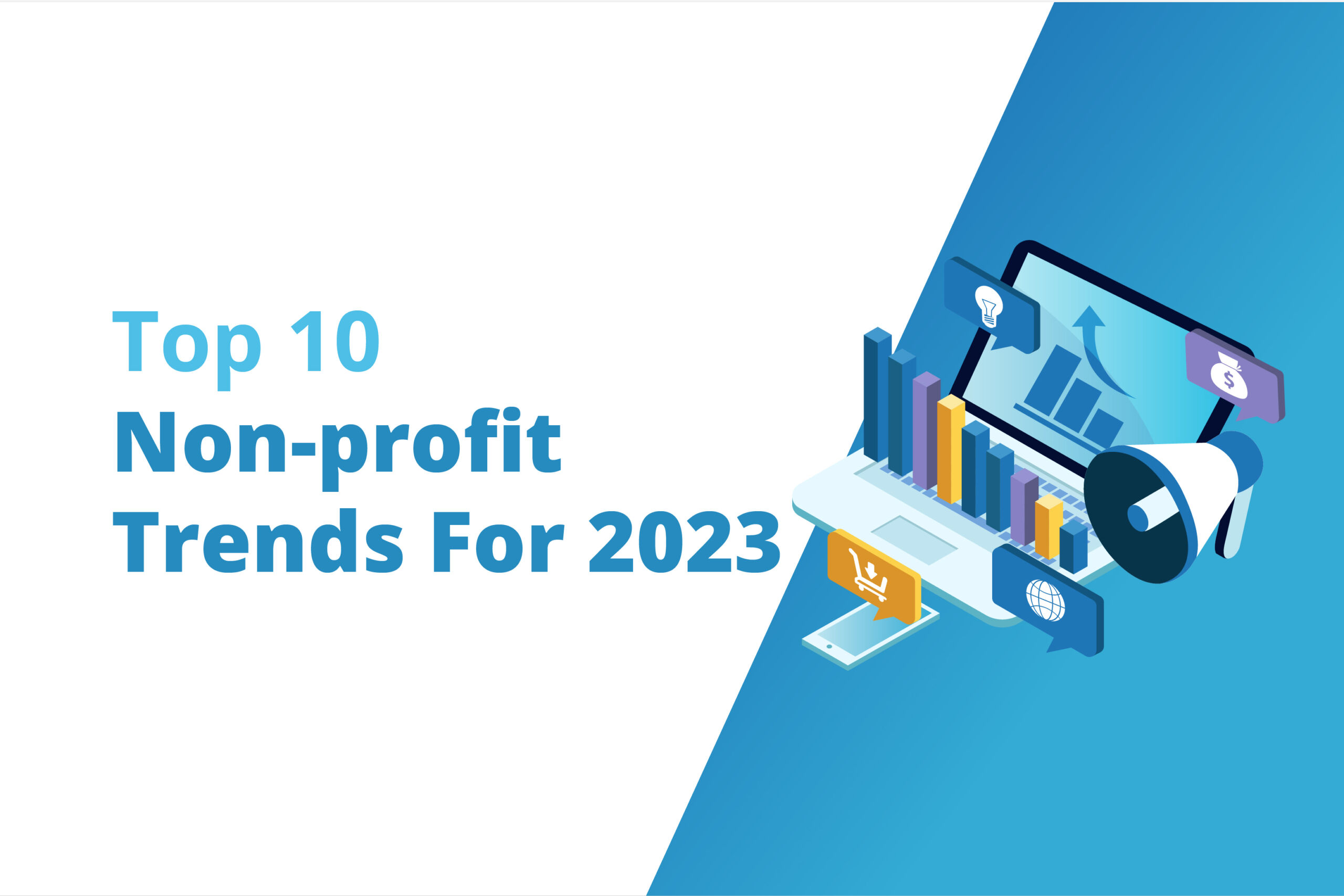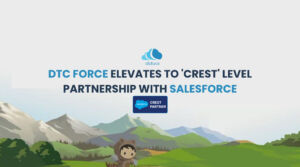As we enter the new year, it’s important to stay informed about the latest trends in the non-profit sector. In 2023, we can expect to see continued growth in online fundraising, increased focus on diversity, equity, and inclusion, and a heightened emphasis on measurable impact. With more and more people turning to the internet for information and to make donations, non-profits that are able to effectively leverage digital tools and platforms will have a distinct advantage. Additionally, non-profits that make DEI a priority and can demonstrate the positive impact of their work will be better positioned to attract support from donors, volunteers, and other key stakeholders.
Table of Content
- FUNDRAISING THROUGH DIGITAL PLATFORMS
- EFFECTIVE MARKETING WITH INCLUSIVITY
- FUNCTIONAL HUMAN RESOURCE MANAGEMENT SKILLS
- FINANCIAL TRANSPARENCY
- KEEP YOUR WALLETS ONLINE
- ARTIFICIAL INTELLIGENCE IS THE FUTURE
- INCLUSION OF CLOUD COMPUTING
- IMPORTANCE OF CYBERSECURITY
- CREATING COLLABORATIONS ONLINE
- USING SOCIAL MEDIA TO ITS HIGHEST ADVANTAGE
FUNDRAISING THROUGH DIGITAL PLATFORMS
There are several reasons why non-profit organizations may choose to use digital platforms for fundraising in 2023:
- Reach: Digital platforms can allow non-profit organizations to reach a large number of potential donors quickly and easily, without the need for face-to-face interactions or physical mailings.
- Convenience: Digital platforms can make it easy for donors to make contributions with just a few clicks, using credit or debit cards, and without having to write and mail a check.
- Data tracking: By using digital platforms, non-profit organizations can track donor information, such as contact details, giving history, and interests, which can help them tailor their fundraising efforts and communications.
- Cost-effective: It often more cost effective than traditional methods and help to save resources of non-profit organization like time and money for fundraising.
- Covid-19: The ongoing COVID-19 pandemic has made it difficult for non-profit organizations to conduct in-person fundraising events and face-to-face interactions with potential donors, digital platforms can offer a way for them to continue fundraising efforts remotely and safely.
This is where DTC Force steps in to provide digital fundraising solutions that allow for the full audibility of donations and the automatic recording of transactions and the issuance of invoices. In addition, fundraising may be done more quickly and to a larger audience when done digitally.
Firms utilizing Salesforce may be able to work toward expanding their goals and expecting a smoother workflow.
EFFECTIVE MARKETING WITH INCLUSIVITY
Nonprofits need to do extensive marketing to get more visibility. Funds for good causes are mostly acquired through advertising and community-building initiatives. It might be difficult for smaller businesses to create marketing campaigns due to a lack of funds and manpower. To address this issue, DTC Force can provide comprehensive salesforce marketing solutions for organizations of all sizes. Additionally, such solutions allow NGOs to broaden their donor base by facilitating communication with supporters via a variety of channels.
FUNCTIONAL HUMAN RESOURCE MANAGEMENT SKILLS
Human resource management (HRM) teams are crucial in the recruitment, development, and retention of staff at nonprofits. The alignment and motivation of employees are crucial to the success of any business, and this can only be achieved via effective management of human resources. Unfortunately, most NGOs don’t have the financial wherewithal to staff full-time resource management departments. To address this problem, companies are developing Salesforce-based human resource management tools to help NGOs optimize their back-office operations. Also, LMSs let NGOs distribute content libraries and boost the efficiency of both staff and volunteers.
FINANCIAL TRANSPARENCY
The more transparency an NGO can add to the system, the easier it is to get the trust of donors. In order to be under the law, NGOs must be transparent with their financial data. Additionally, donors rely on transactional openness to ensure their gifts are going to worthy causes. As the number of intermediaries and the volume of transactions rise, however, maintaining data integrity becomes a time-consuming and expensive challenge. This is why new businesses use data management tools to increase transparency. Blockchain-based systems, for instance, save the time, energy, and money normally spent on data maintenance.
KEEP YOUR WALLETS ONLINE
Once the most common ways to donate, cash and checks are now falling out of favor. Visa’s Payment Panel reports a 10% increase in card payment usage over the previous five years, as more customers choose to make donations using debit or credit cards. Charities are adapting by providing online contribution forms and QR code scanning to accept payments via digital wallets like Apple Pay and Google Pay. Some of them will even take bitcoin as payment!
ARTIFICIAL INTELLIGENCE IS THE FUTURE
The use of artificial intelligence to streamline back-end procedures and produce crucial operational insights is becoming increasingly common in the charity sector. This boosts earnings and decreases expenses. With the help of AI, nonprofits may automate a variety of administrative activities, which is especially helpful for smaller organizations that may not have a human resources department or a separate administrative team. Salesforce’s cloud-based services integration also helps non-profits save money by using AI-based automation.
INCLUSION OF CLOUD COMPUTING
Charities may save money and improve productivity by moving their computer needs to the cloud. Also, they improve organizational openness by automating data processing procedures and centralizing data administration. As an NGO, you’d want to be efficient with your data so that it allows easy access at any time. Startups are assisting with this by delivering cloud-hosted software for managing employee workflows, donor engagement, course delivery, staff training, and more for the nonprofit sector. These options let them do more with less money spent on infrastructure and tools while making collaborative working an easy option for all the team members.
IMPORTANCE OF CYBERSECURITY
The increasing use of digital workflows in nonprofits increases their vulnerability to cyber threats. When businesses move their activities to the cloud, they open themselves up to new vulnerabilities. Funding availability makes it more difficult for NGOs to keep specialized cybersecurity teams than for-profits. Startups are building low-cost cybersecurity solutions in Salesforce to address these problems. They make it possible for charities to safeguard user information in cloud services like email. Donors are further encouraged to contribute since their information will be secure from any unauthorized access.
CREATING COLLABORATIONS ONLINE
Volunteering was significantly impacted by the COVID-19 epidemic, which led to fewer people participating in in-person activities and fewer social events. Volunteers are sometimes not willing to go to outlying places, which further limits the scope of charity work that may be done there. As a response, new businesses are creating tools to let NGOs work together online, regardless of distance. The need for these tools will rise as most volunteers would want to be part of the social good in the comfort of their own schedule. As a result, the number of volunteers who participate in events is boosted, and the quality of the training they receive is improved.
USING SOCIAL MEDIA TO ITS HIGHEST ADVANTAGE
Estimates for social media use suggest that the average adult will spend the equivalent of 6.8 years of their life on social media. Charities of all sizes and scopes really must have a social media presence nowadays. DTC Force’s experienced and expert consultants are very attentive to every digital development to make sure they only give the best advice to their clients. The use of social media is only going to increase from here and for NGOs, it’s crucial to make their firm position on each one of them.
Especially on platforms where the majority of the donors are present to build reputation and credibility. For that, you need to direct your attention to the appropriate social media outlets, experts say. Once you’ve made the right decisions about your target audience(s), target demographics, and target individuals you want to persuade to become financial contributors. Select the platforms that provide the most value according to the criteria listed above. Learn as much as you can about the target audience by doing some digging. The only way to know your audience better is to be on the platform you’re using to target them. Once you know your audience, then the rest of the campaign goals will automatically happen.
CONCLUSION
There is a lot of room for innovation in the nonprofit sector when it comes to the usage of tools like Salesforce for NGOs and social media. Salesforce consulting firms provide a steady stream of cutting-edge developments, but one thing hasn’t changed: the world’s insatiable appetite for engaging narratives. They wish to become acquainted with your group and its mission. The most efficient method is to adopt modern methods of communication, such as the use of podcasts and videos to spread awareness about your cause and attract new donations.








